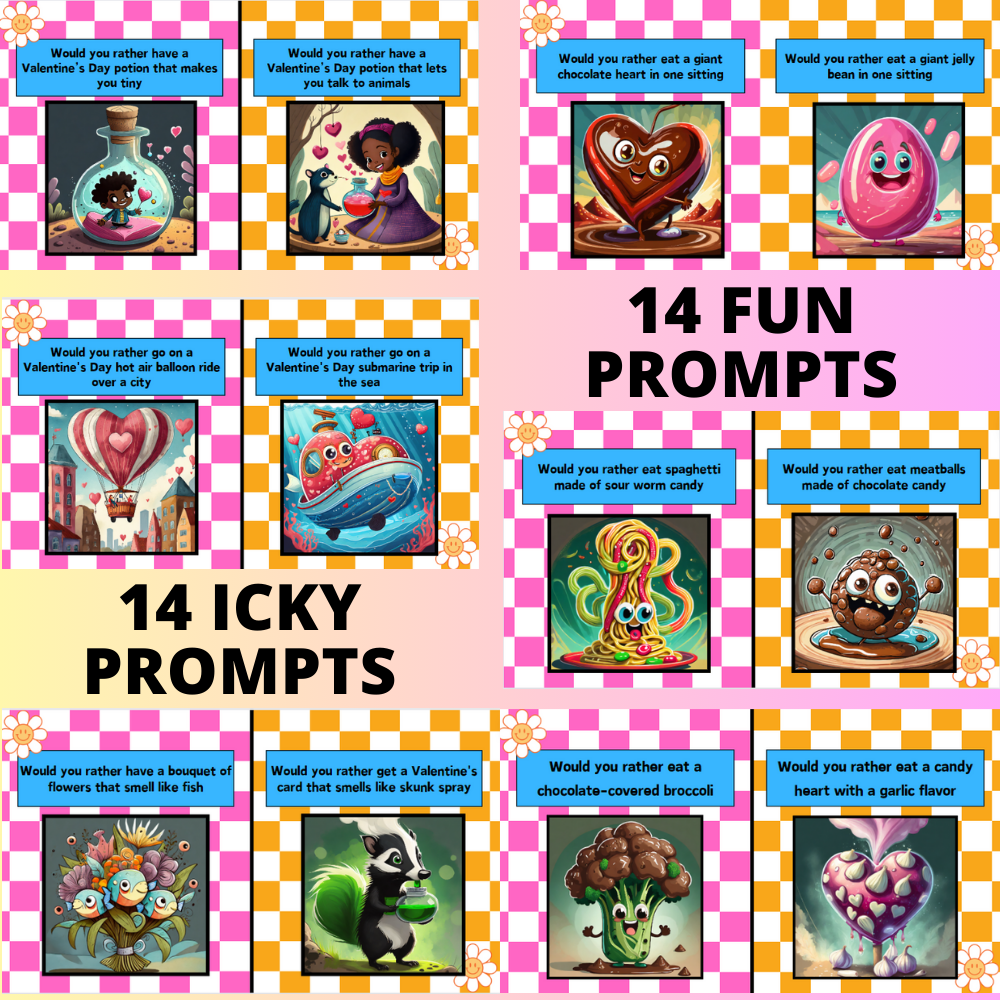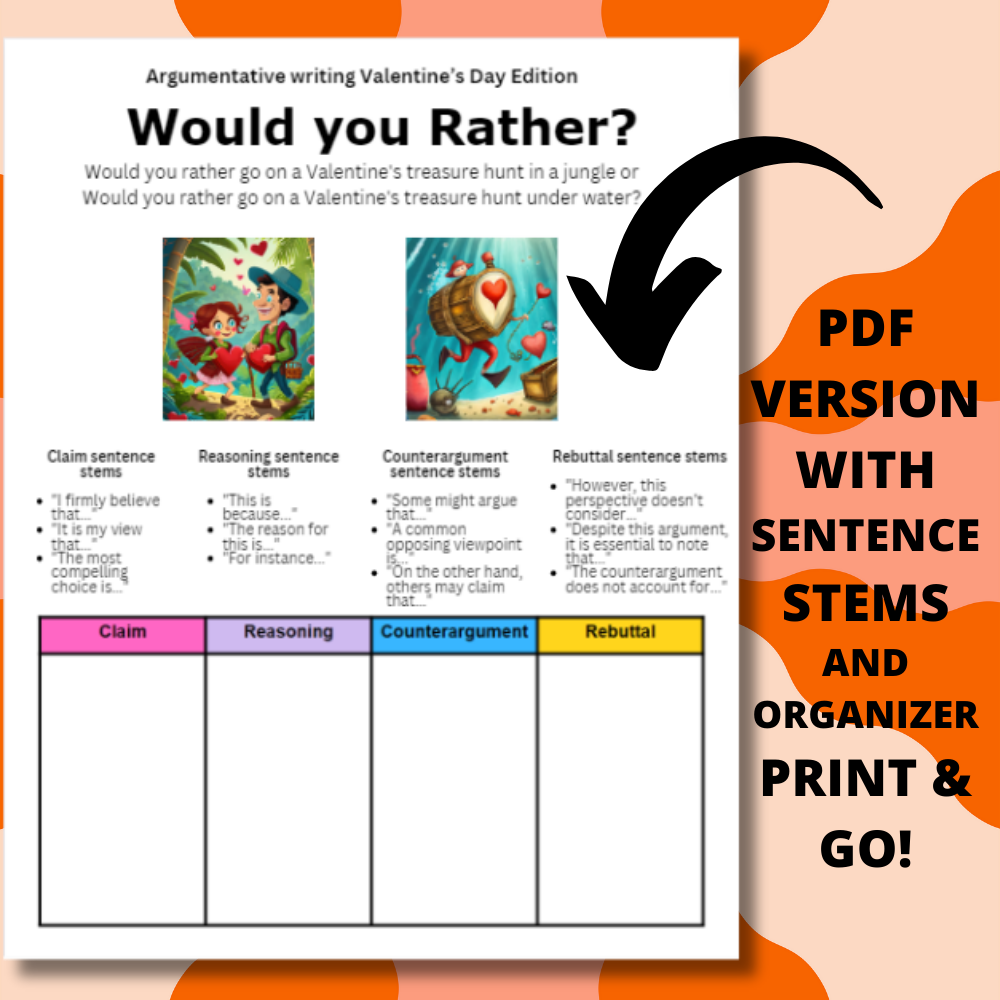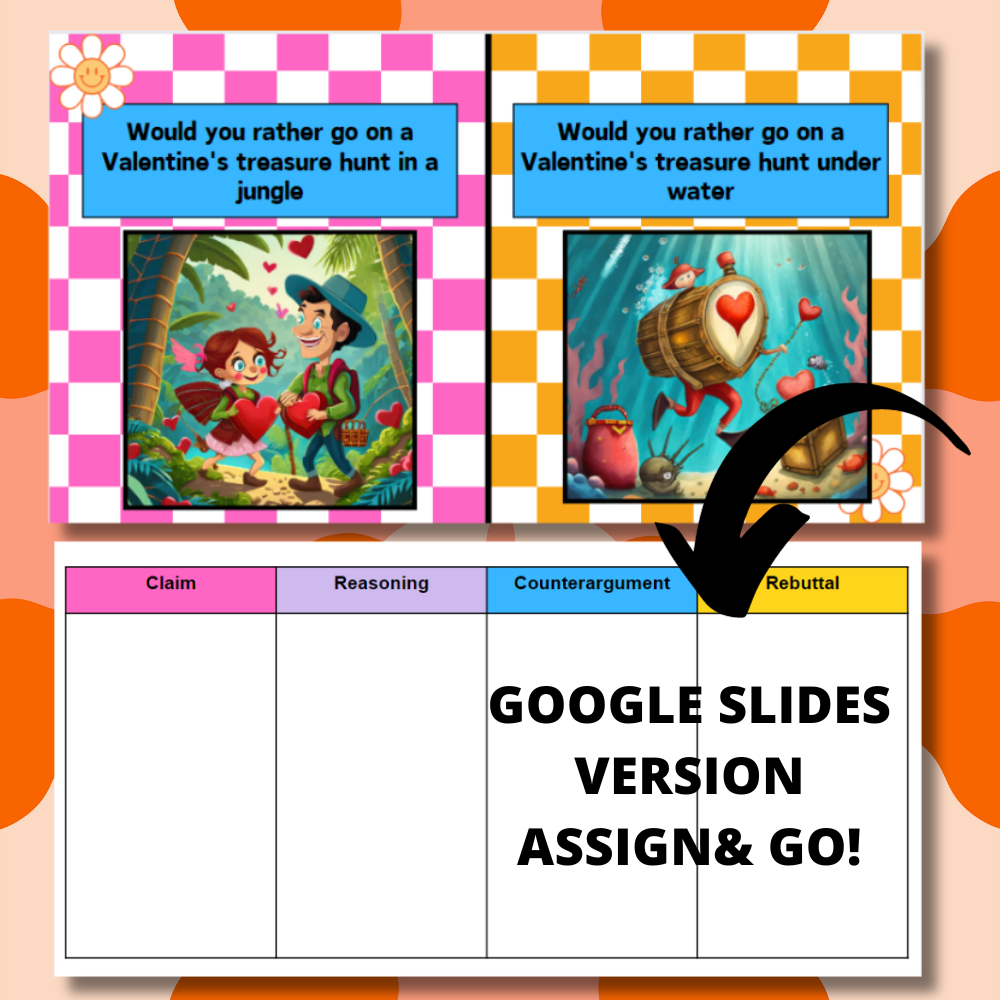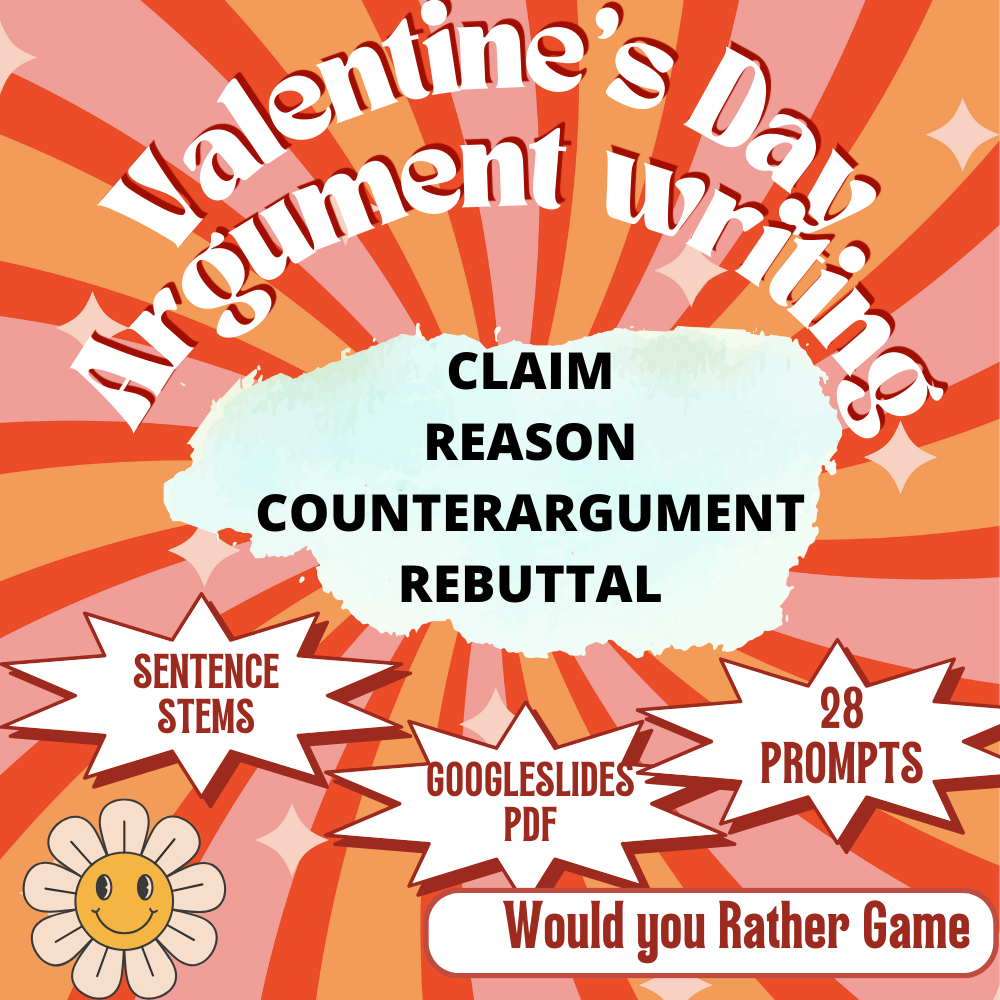28 Would You Rather Prompts for Argumentative Writing Unit this Valentine’s Day
As Valentine’s Day approaches, what better way to engage our students than with the power of argument? Not the kind of heated discussions over who ate the last chocolate, but structured, thoughtful argumentative writing that forms the cornerstone of critical thinking. Let’s unwrap the sweet secrets to teaching this essential skill.
The Heart of Argument Writing
Argumentative writing is about taking a stand and backing it up with evidence. It’s not just about persuading others but about presenting a balanced view that considers multiple perspectives. At its core, an argumentative paragraph should have a clear claim, solid evidence, a counterargument, and a strong rebuttal.
Claim: The Starting Point
Begin with a claim, a statement that asserts your position. Encourage students to make their claims debatable and specific. A claim isn’t just an opinion; it’s an anchor for their entire argument, something that others might reasonably disagree with. To help students with accommodations I include sentence starters as well as build plenty of background knowledge through discourse so they feel confident when its time to pick a position.
Evidence: The Support System
Next comes the evidence, the heartbeats of the argument. Students should use facts, statistics, quotes, or real-life examples to support their claim. Teach them to ask, “Does this evidence directly back up my claim?” The stronger and more relevant their evidence, the more convincing their argument will be.
Counterargument: Seeing the Other Side
Addressing the counterargument teaches empathy and critical thinking. Students should acknowledge an opposing viewpoint, showing they’ve considered other perspectives. This practice not only strengthens their argument but also demonstrates respect for differing opinions.
Rebuttal: The Finishing Touch
The rebuttal is where students defend their position against the counterargument. Here, they must explain why their claim still holds up, even in the face of opposition. This is their chance to clarify misconceptions and reassert their viewpoint.
Cupid’s Toolbox: Engaging Resources for Argument Writing
Now, how do we bring all this into our Valentine’s-themed classrooms? I’m excited to share two resources that will make teaching argument writing a hit with your students. First, our Argumentative Writing Unit: Valentine’s Day 28 Would-You-Rather Prompts is a treasure trove of engaging prompts paired with stunning visuals. It’s perfect for grades 4-6 and comes in PDF and Google Slides formats, catering to any classroom setup.
Take “Would you Rather” to the next level and use it as a tool for argumentative writing. Introduce the art of persuasion with our ‘Valentine’s Day Argumentative Writing Resource,’ where love meets lively discourse.
Perfect for grades 4-8, this resource is crafted to demystify argumentative writing by breaking down its core components. Students will learn to construct solid arguments, establish clear claims, back them with logical reasoning, skillfully address counterarguments, and deliver convincing rebuttals.
What sets this resource apart are the 28 uniquely crafted ‘Would You Rather’ prompts – 14 fun and 14 icky scenarios – designed to spark engagement and laughter in any classroom. Accompanied by high-quality images and available in both PDF and Google Slides, this resource is a visual treat that enhances the learning experience.
Here’s what makes our resource a ‘must-have’ for your classroom:
☑️ Blended learning
☑️ 1:1 student-device ratio
☑️ Small group discussions
☑️ Intervention strategies
☑️ Learning centers
☑️ Homework assignments
☑️ Engaging warm-ups
With 64 interactive slides and 28 printable PDF pages, it provides ample practice for students to master argumentative writing. Whether you’re looking to spice up your writing centers or bring a little ‘love’ to your intervention lessons, these prompts are sure to keep students engaged.
Don’t miss out on the chance to make argumentative writing the highlight of your classroom this February. Get your students chatting, debating, and writing with our Valentine’s Day Argumentative Writing Resource. Follow our store for more heartfelt educational resources that blend fun with learning!
And for those looking to delve deeper into tracing arguments, check out The Boy is Mine: Tracing an Argument with PowerPoint & Graphic Organizer. This resource offers an excellent way for students to visually map out the elements of an argument, enhancing their understanding of argument structures.



Other resources you may like: How to use novels in the middle school classroom (toobookedup.com)
